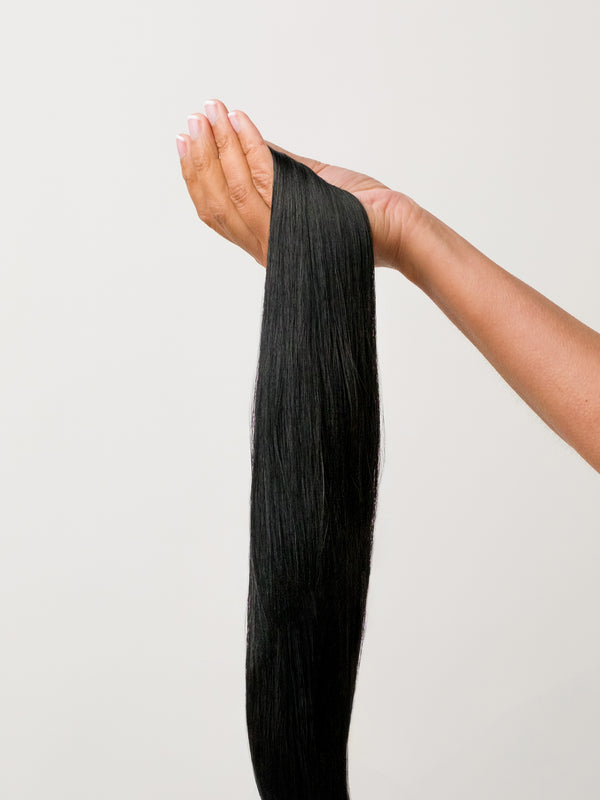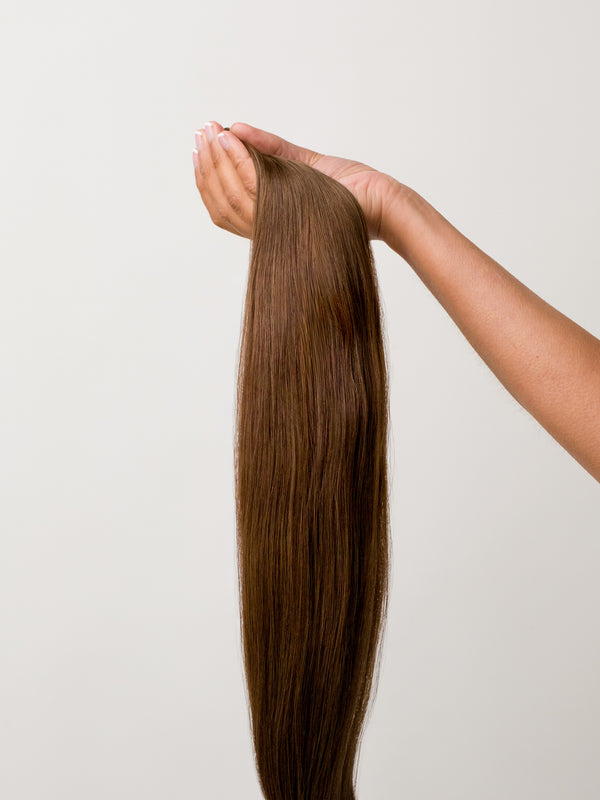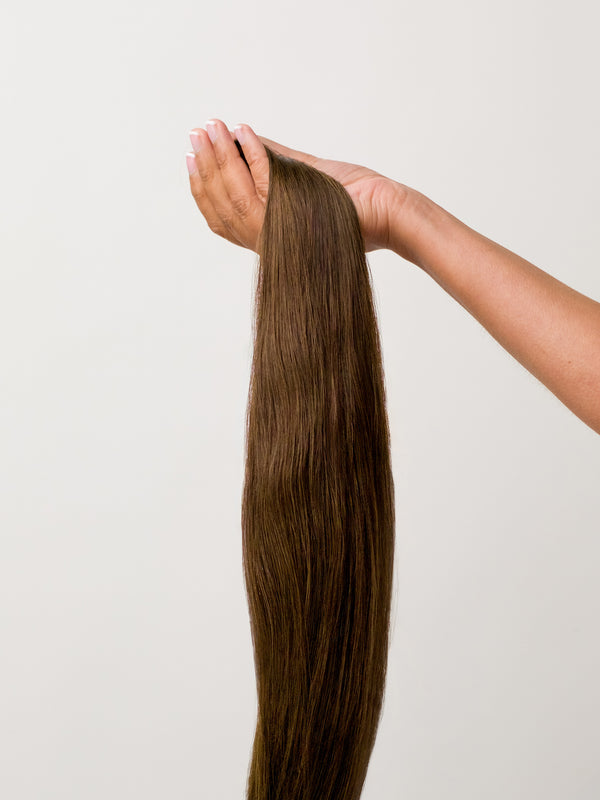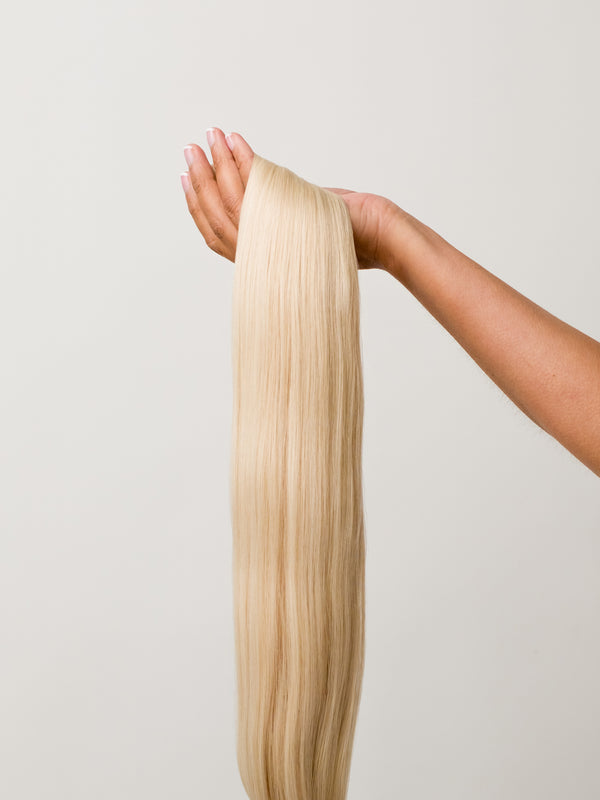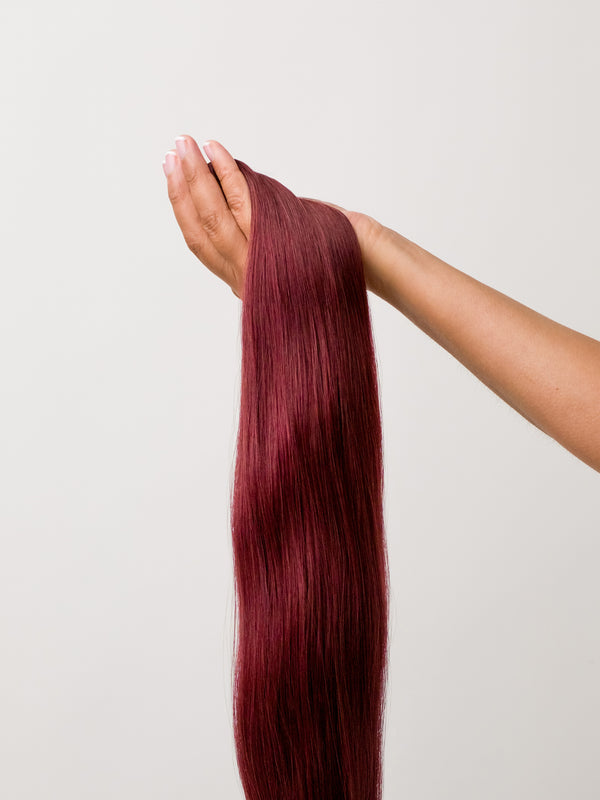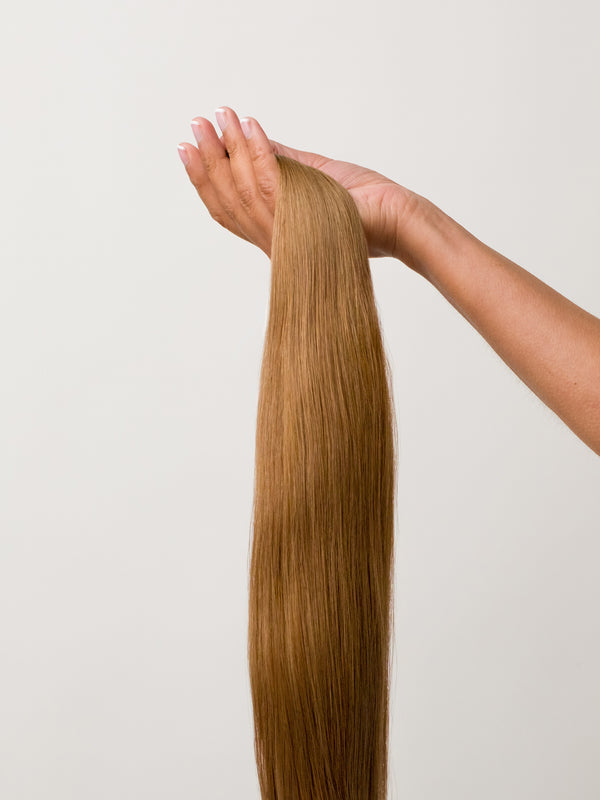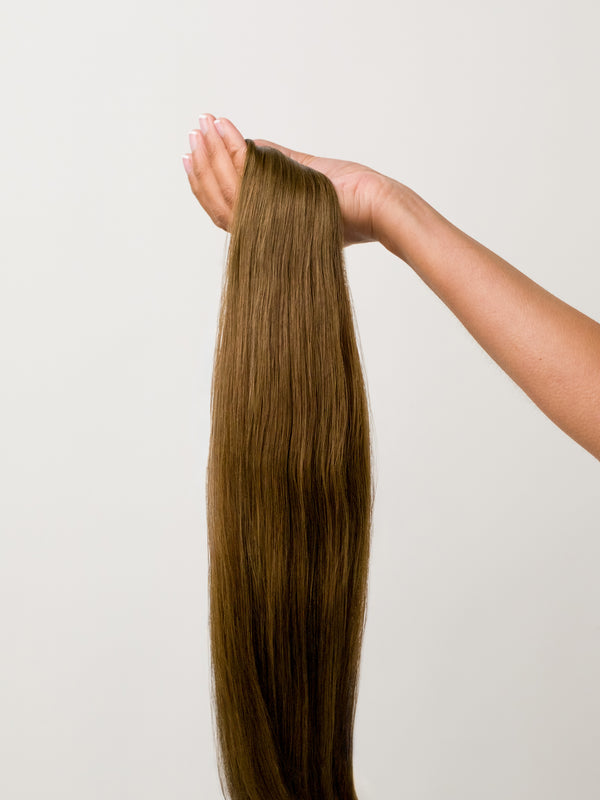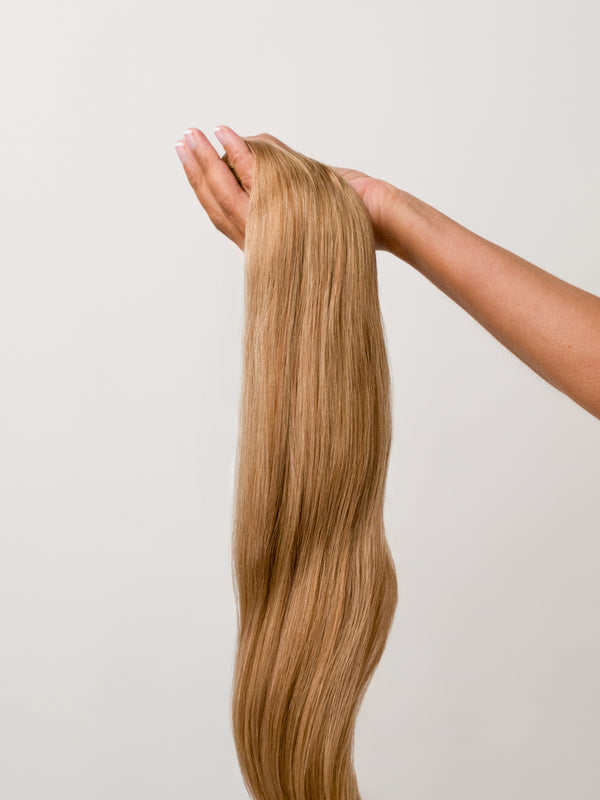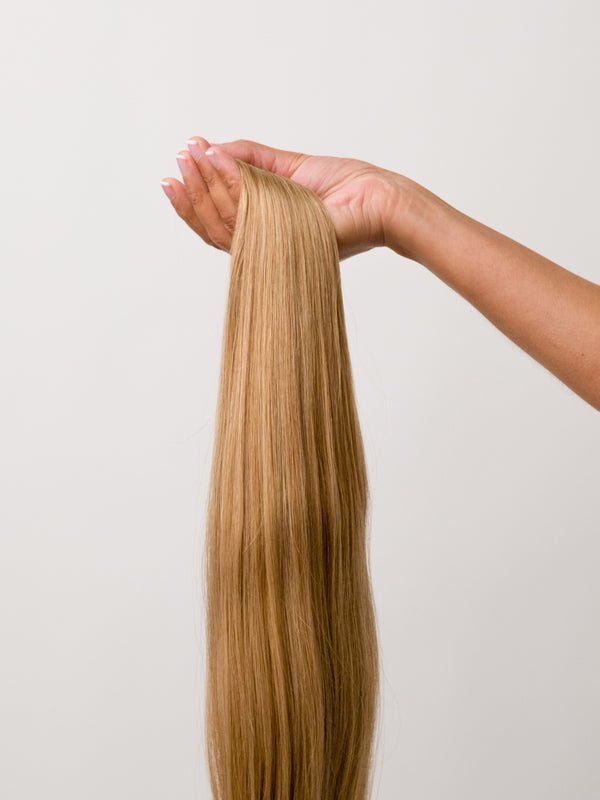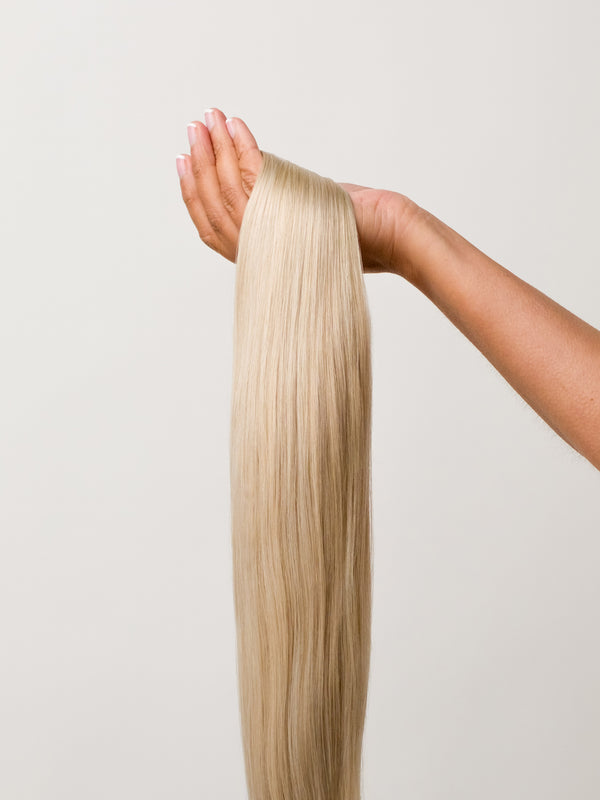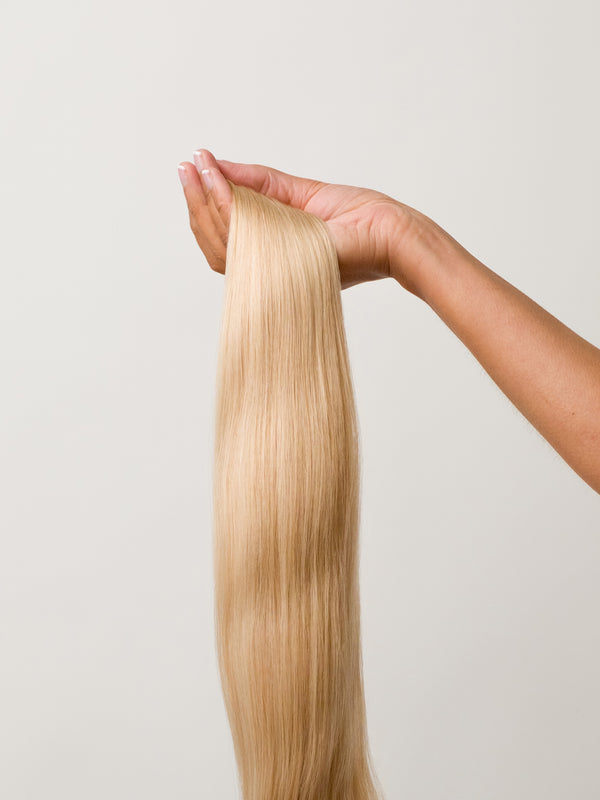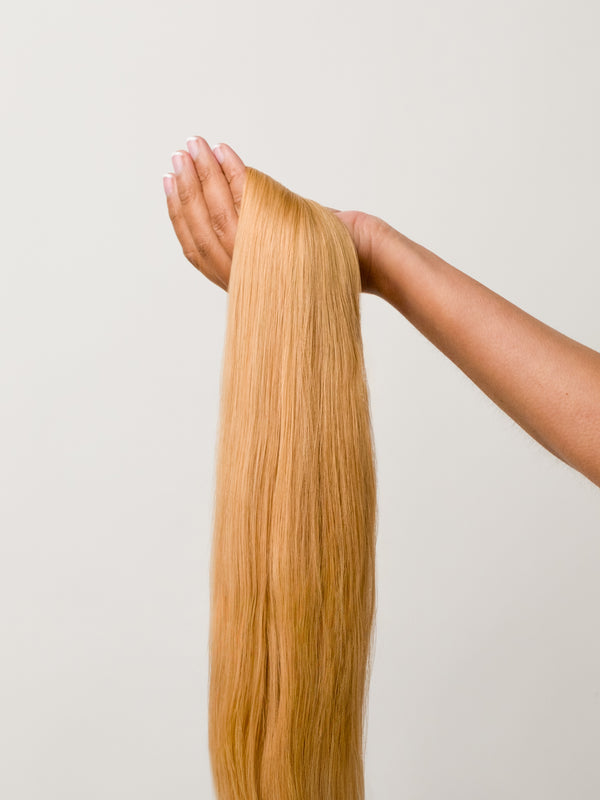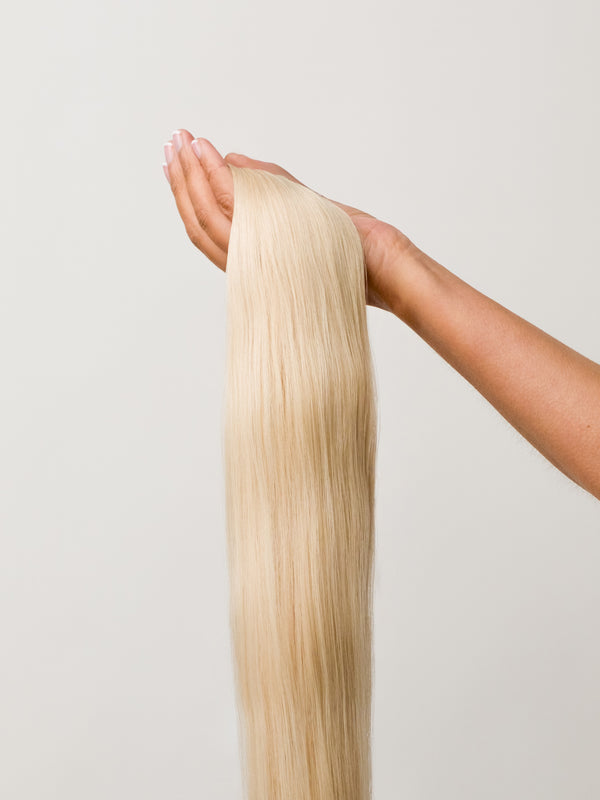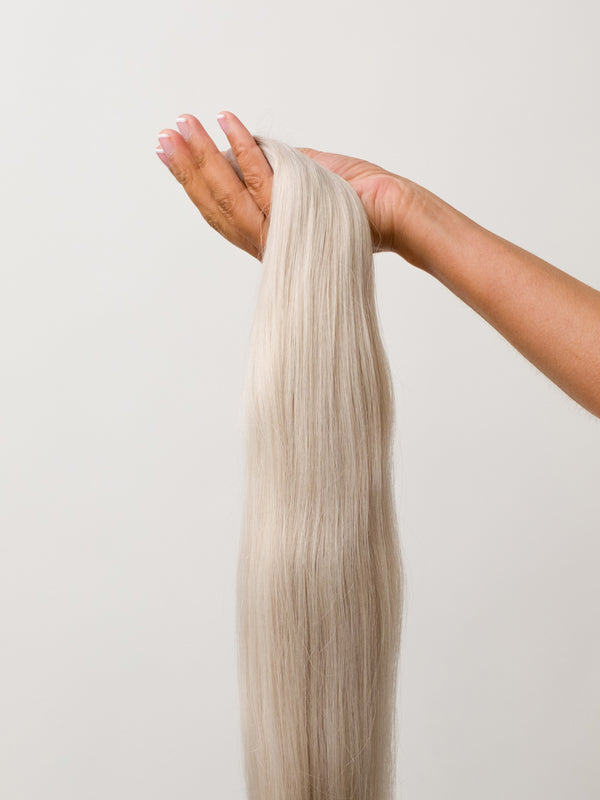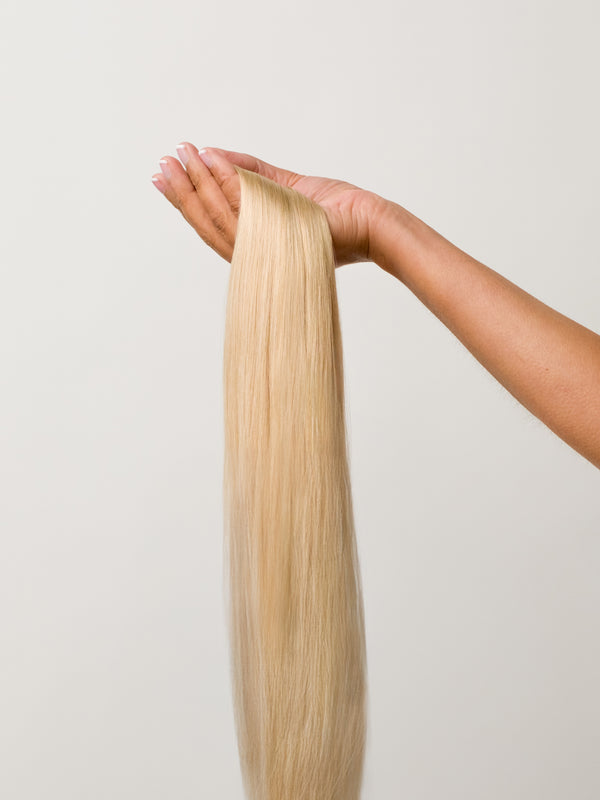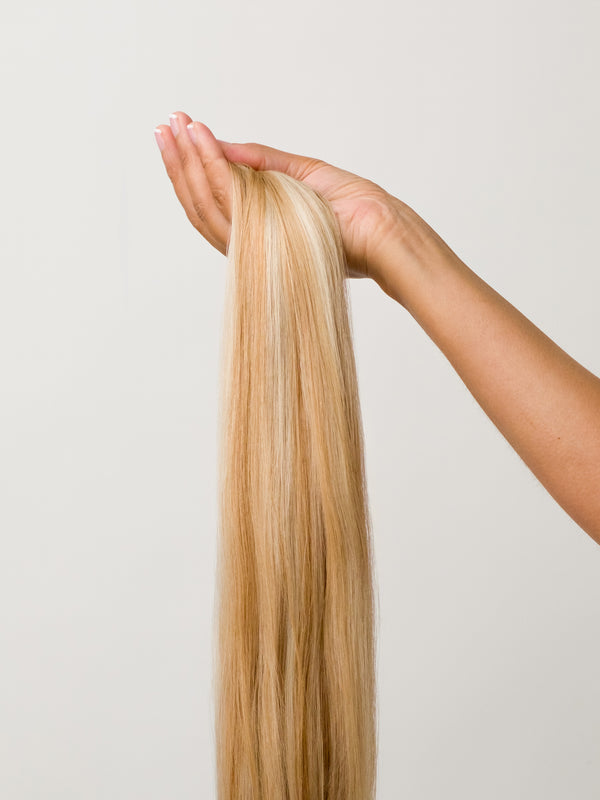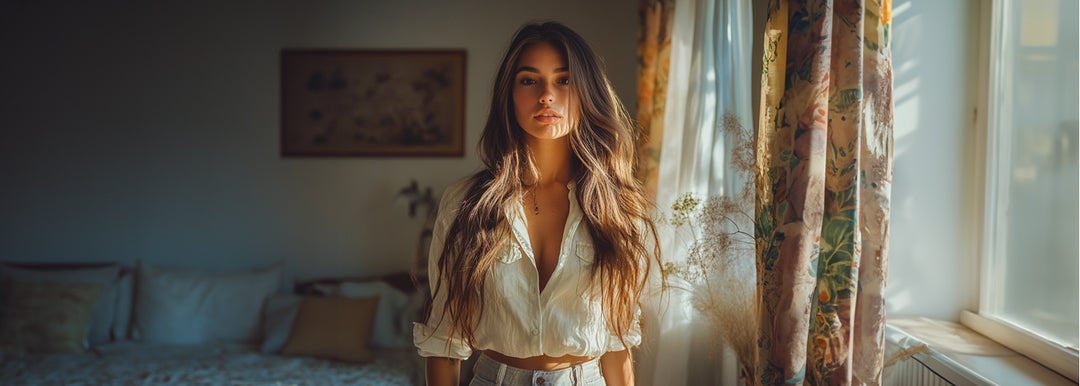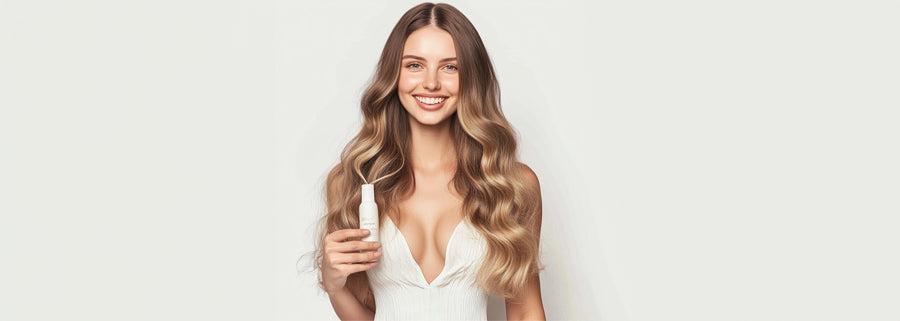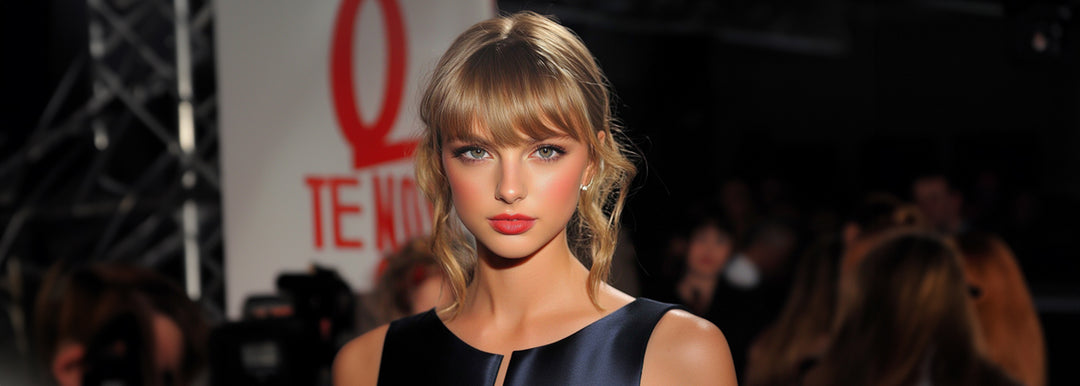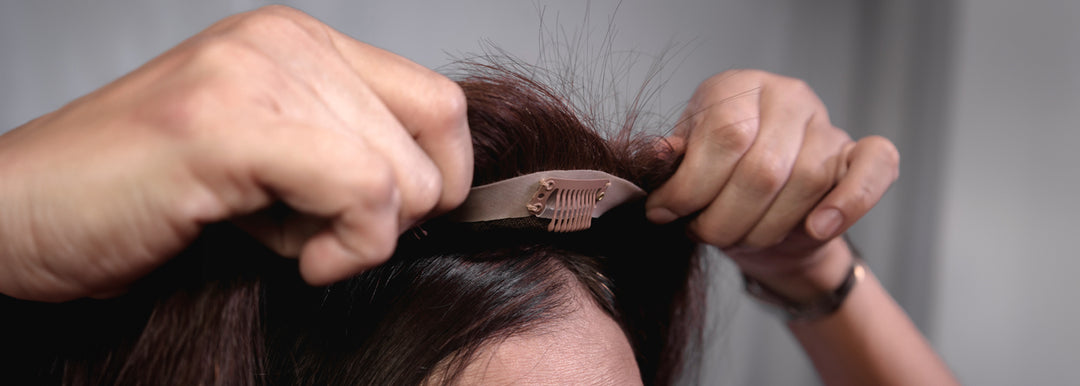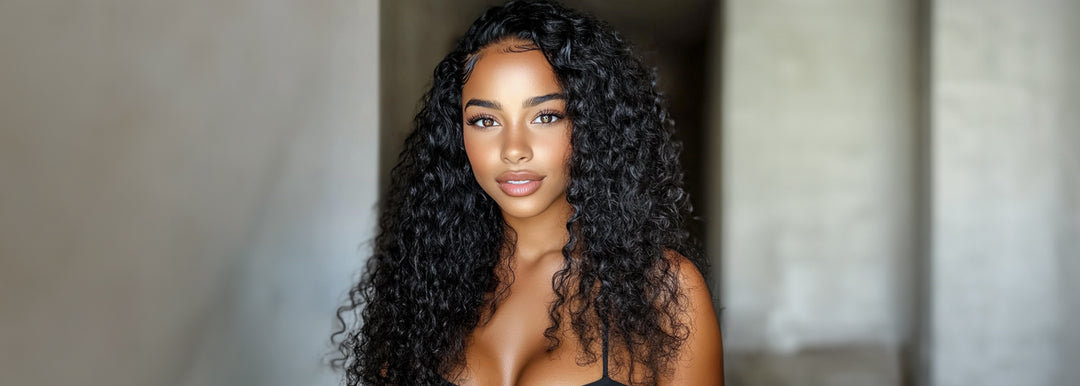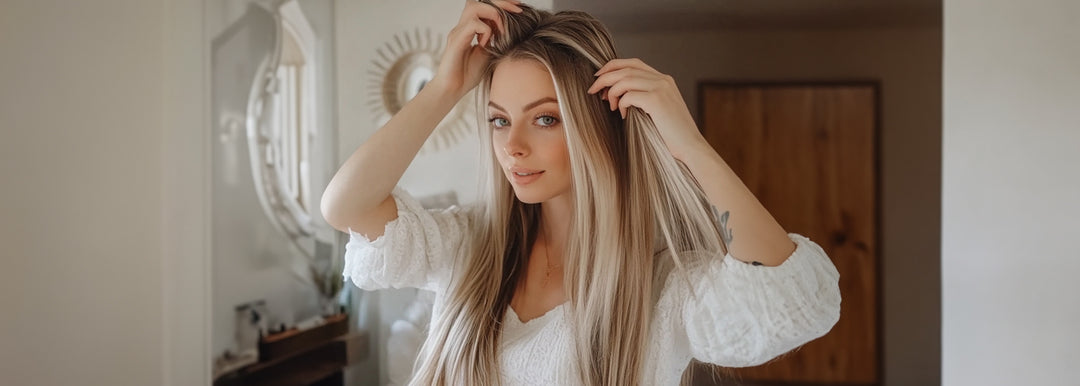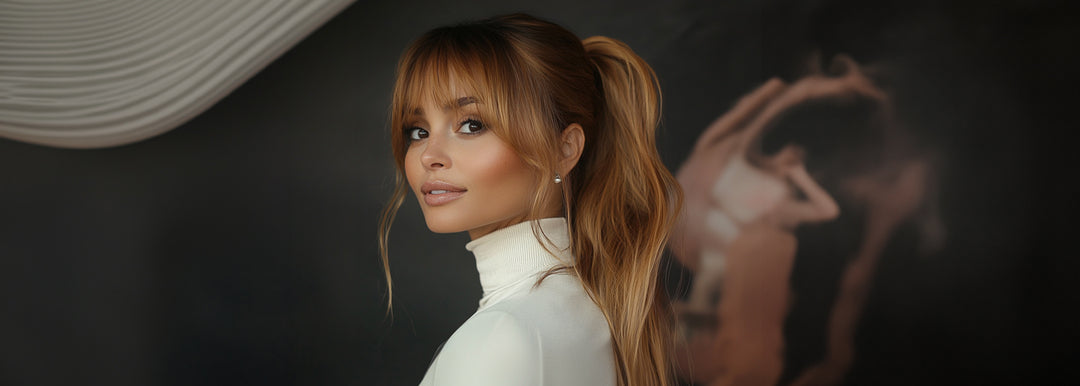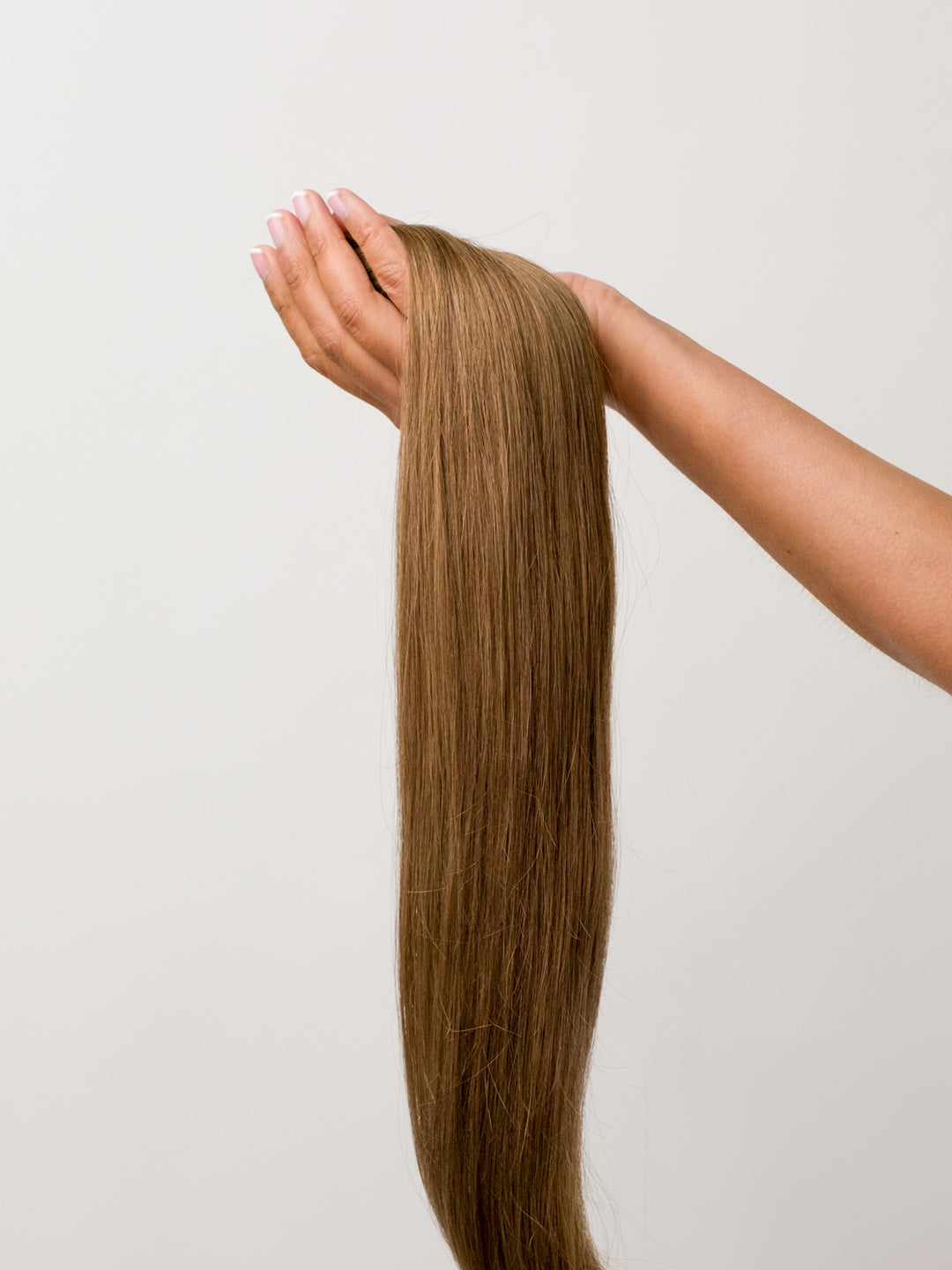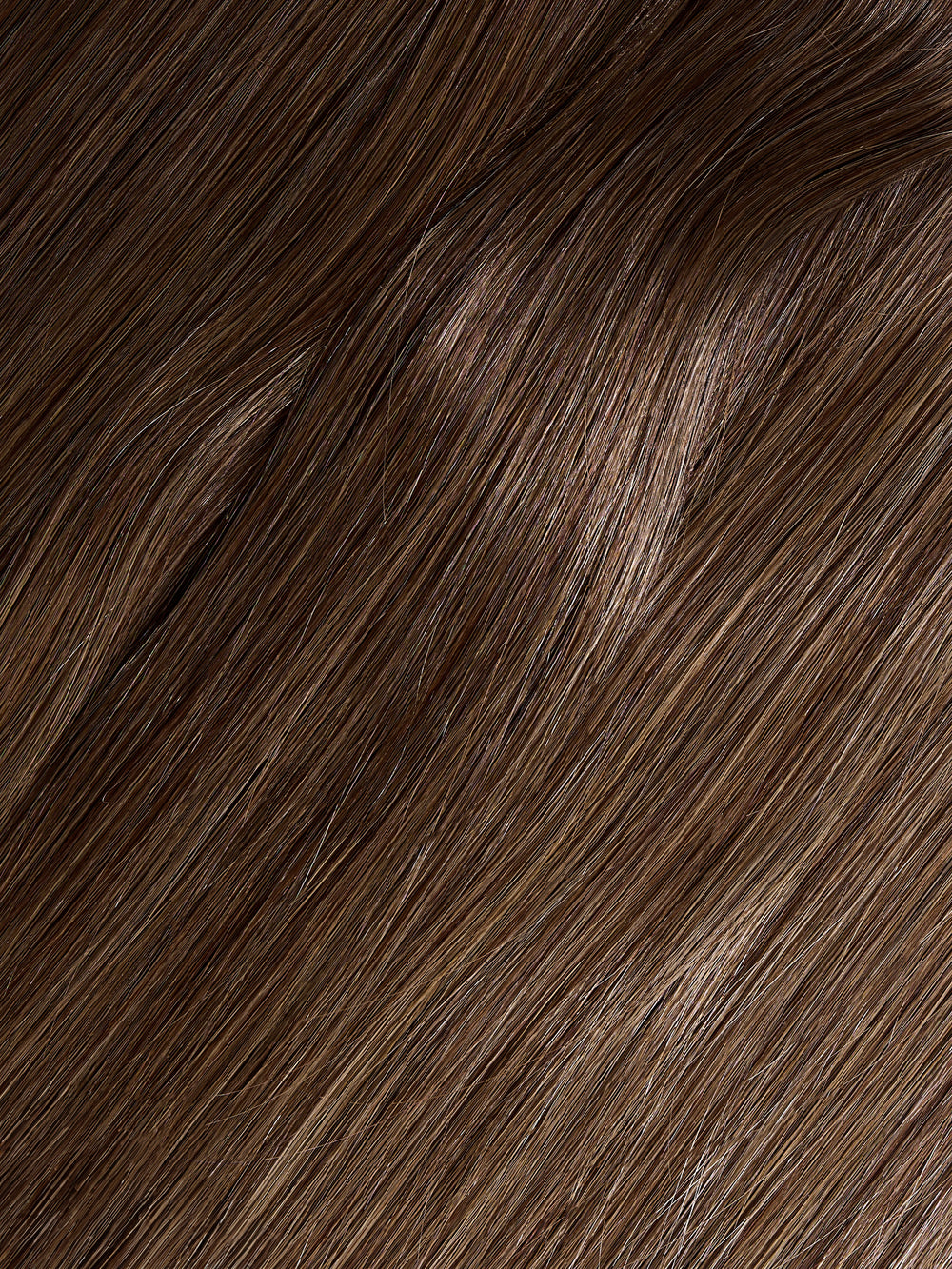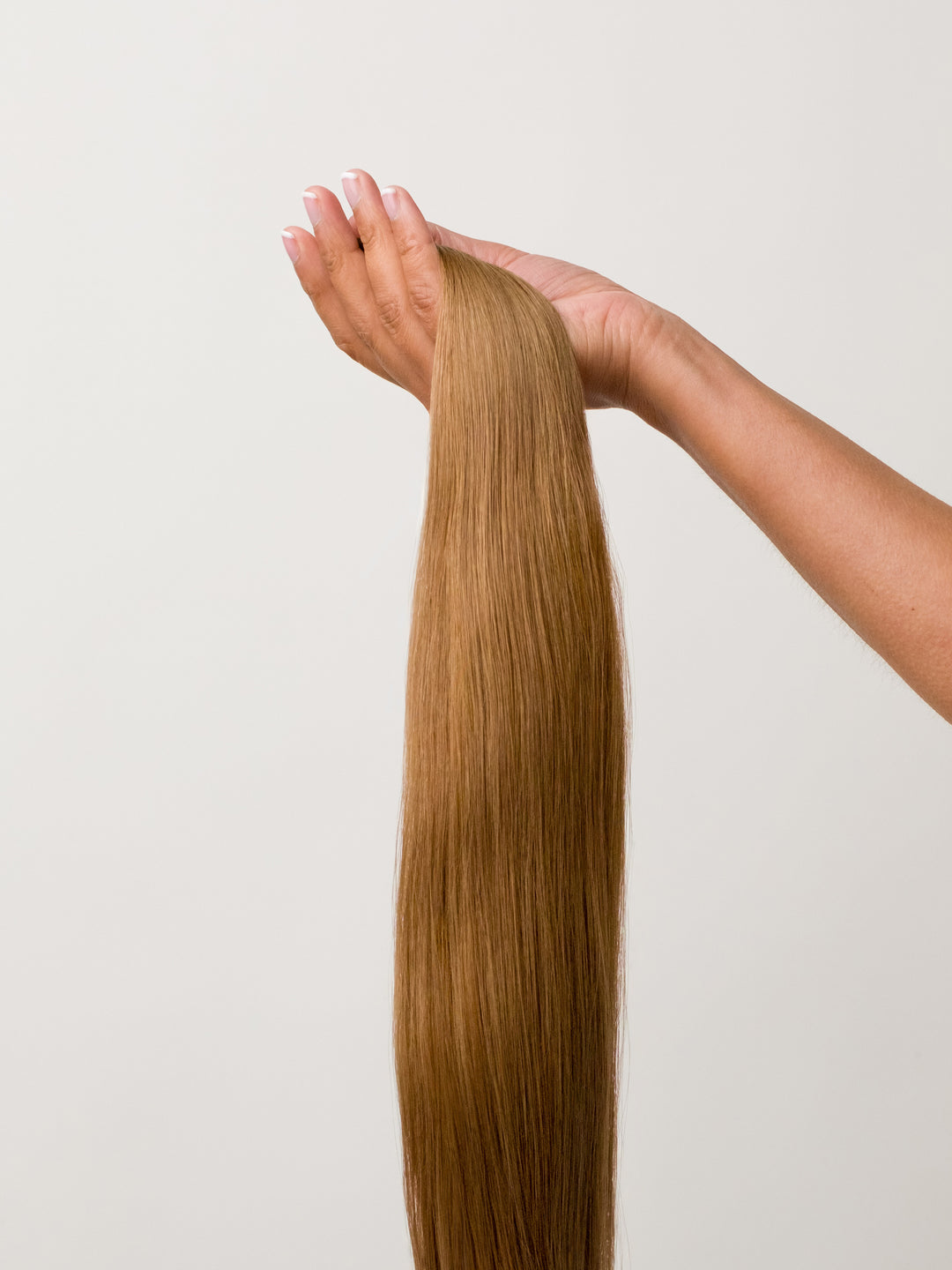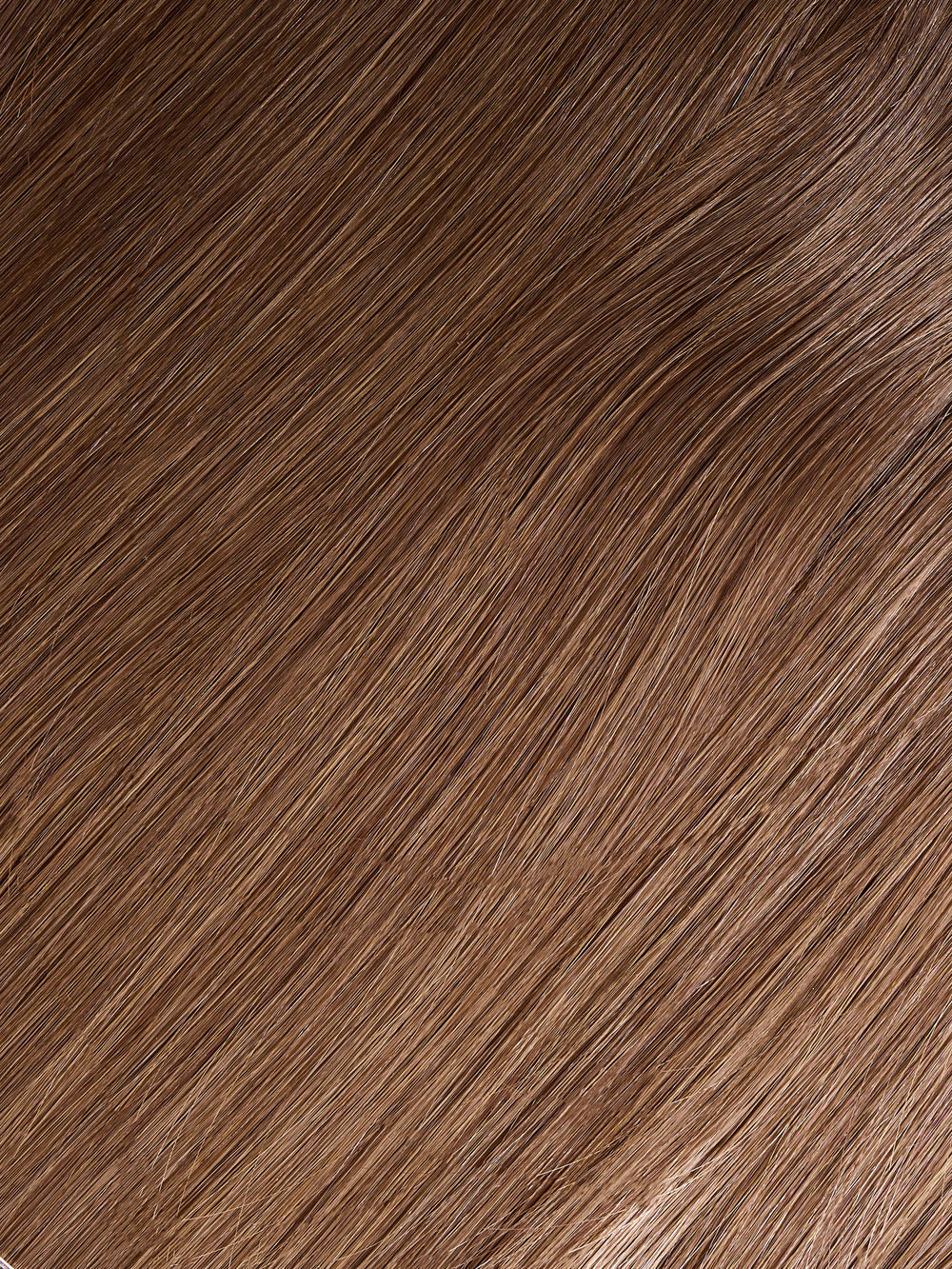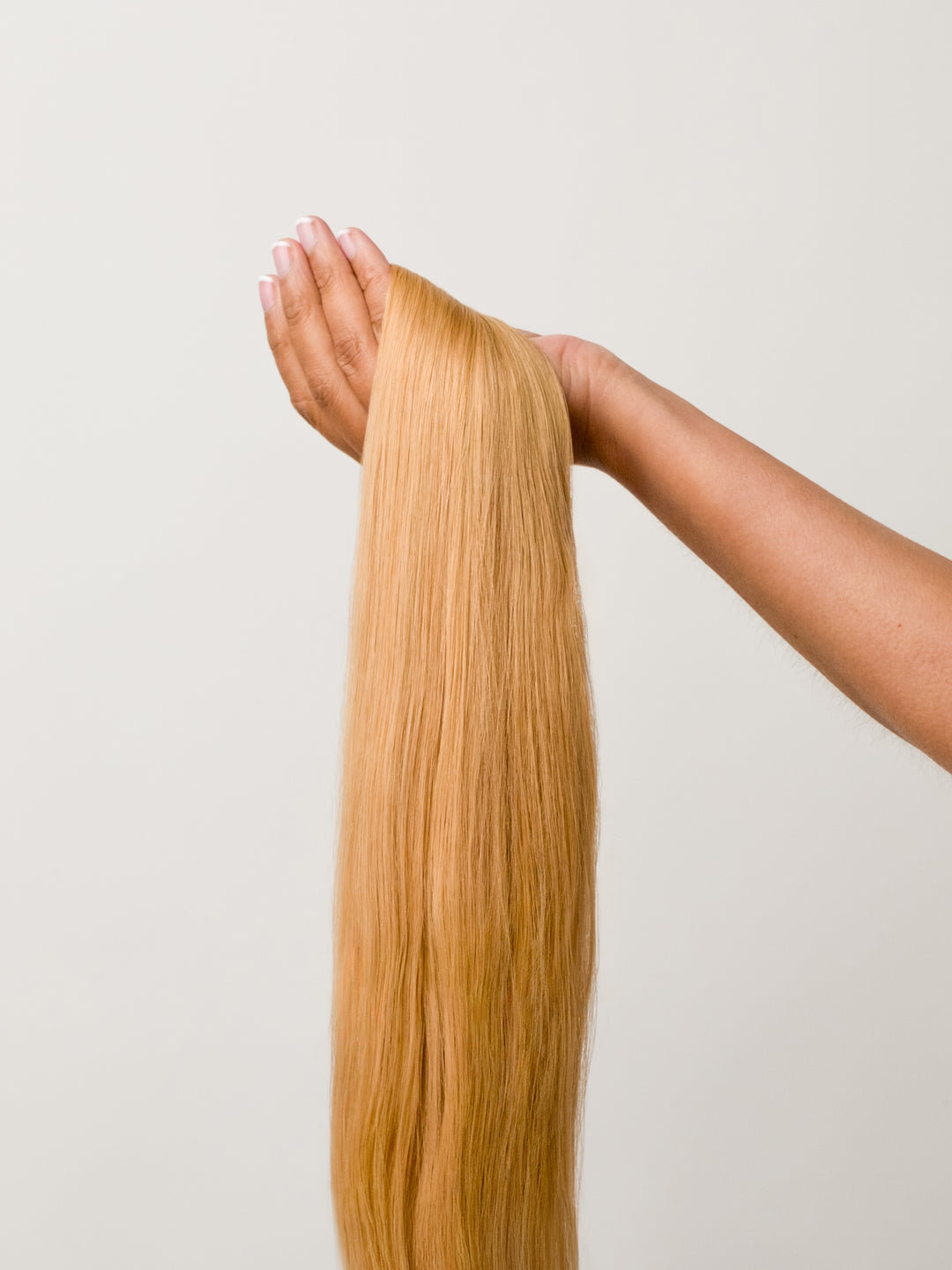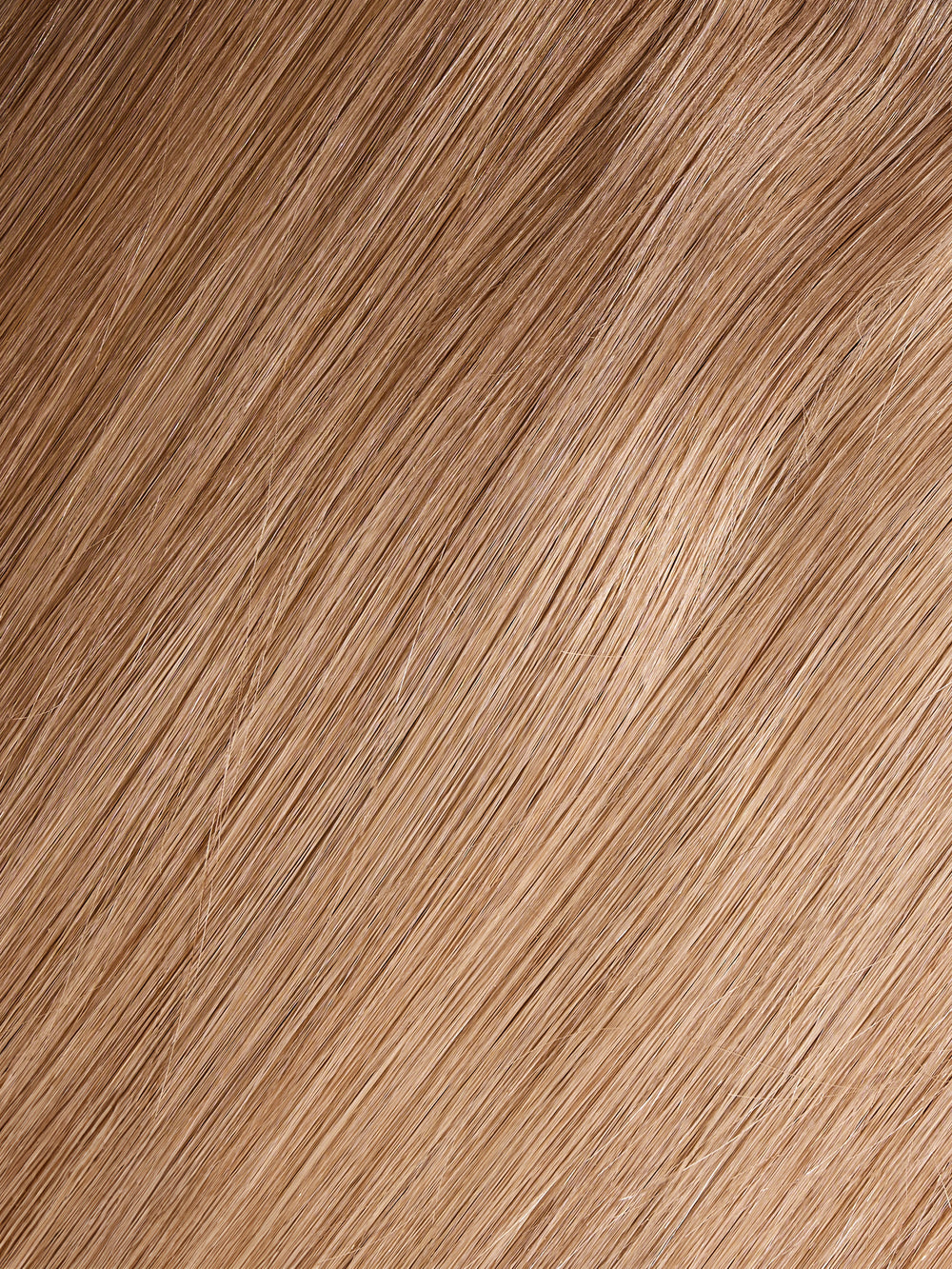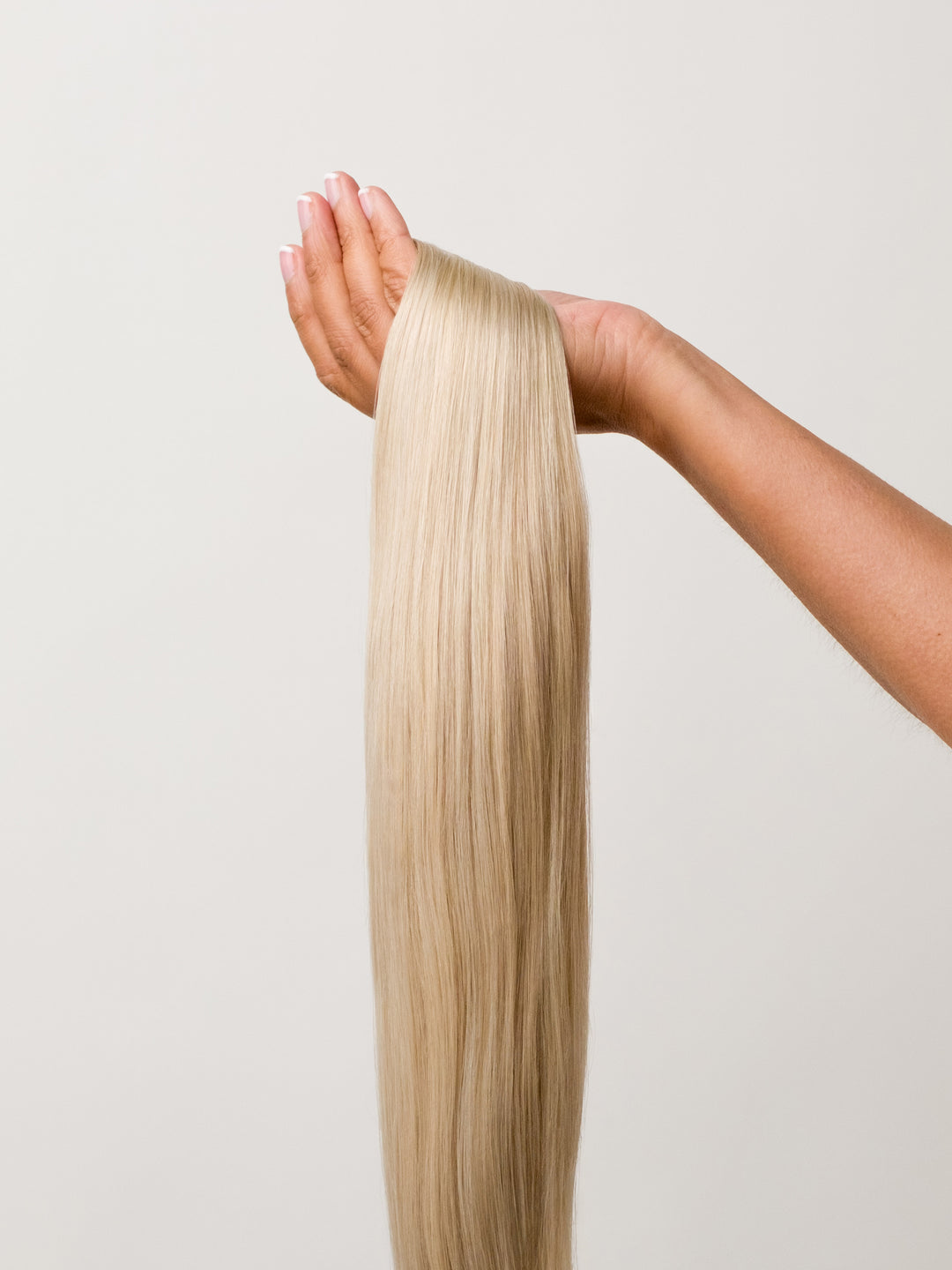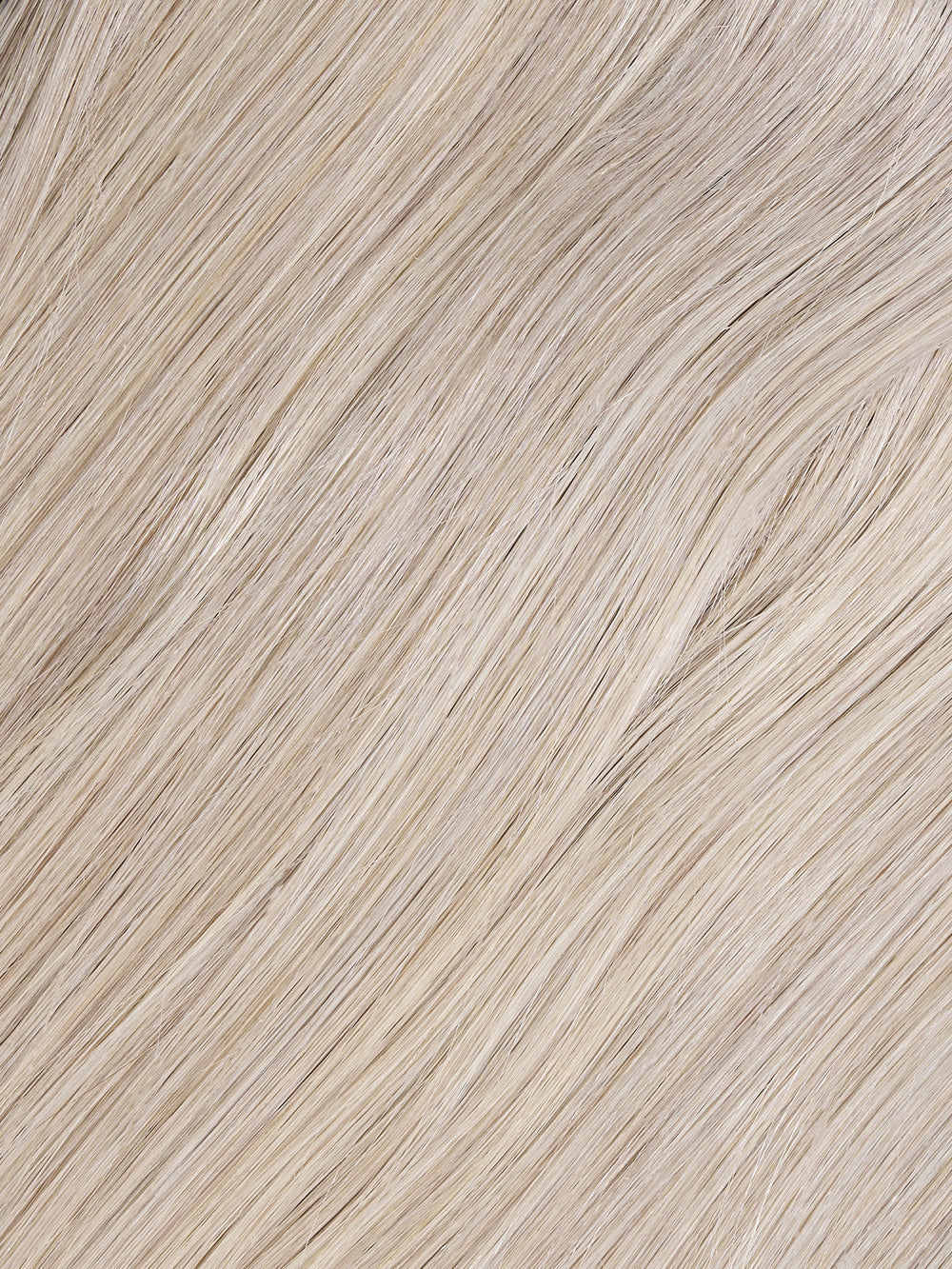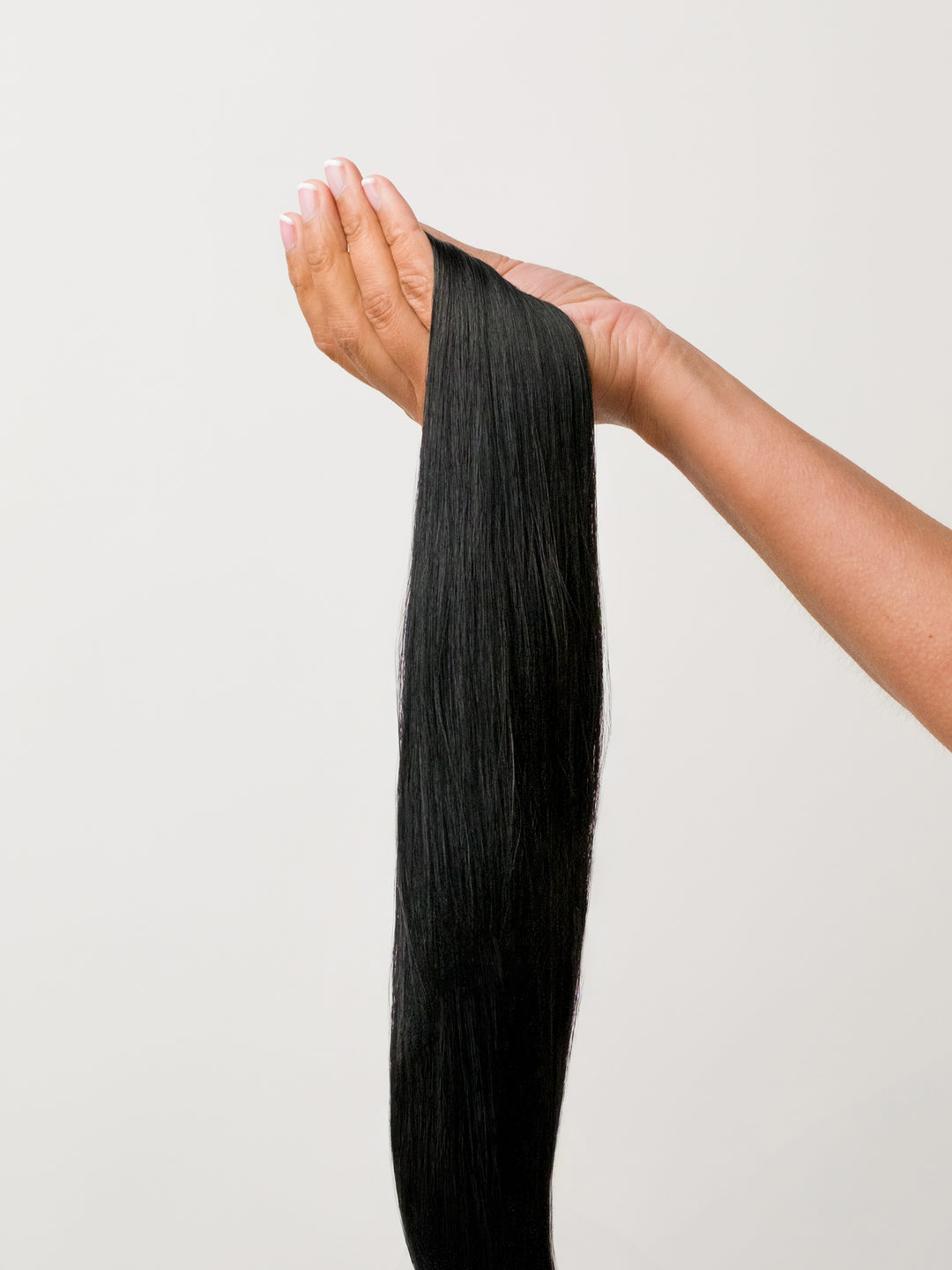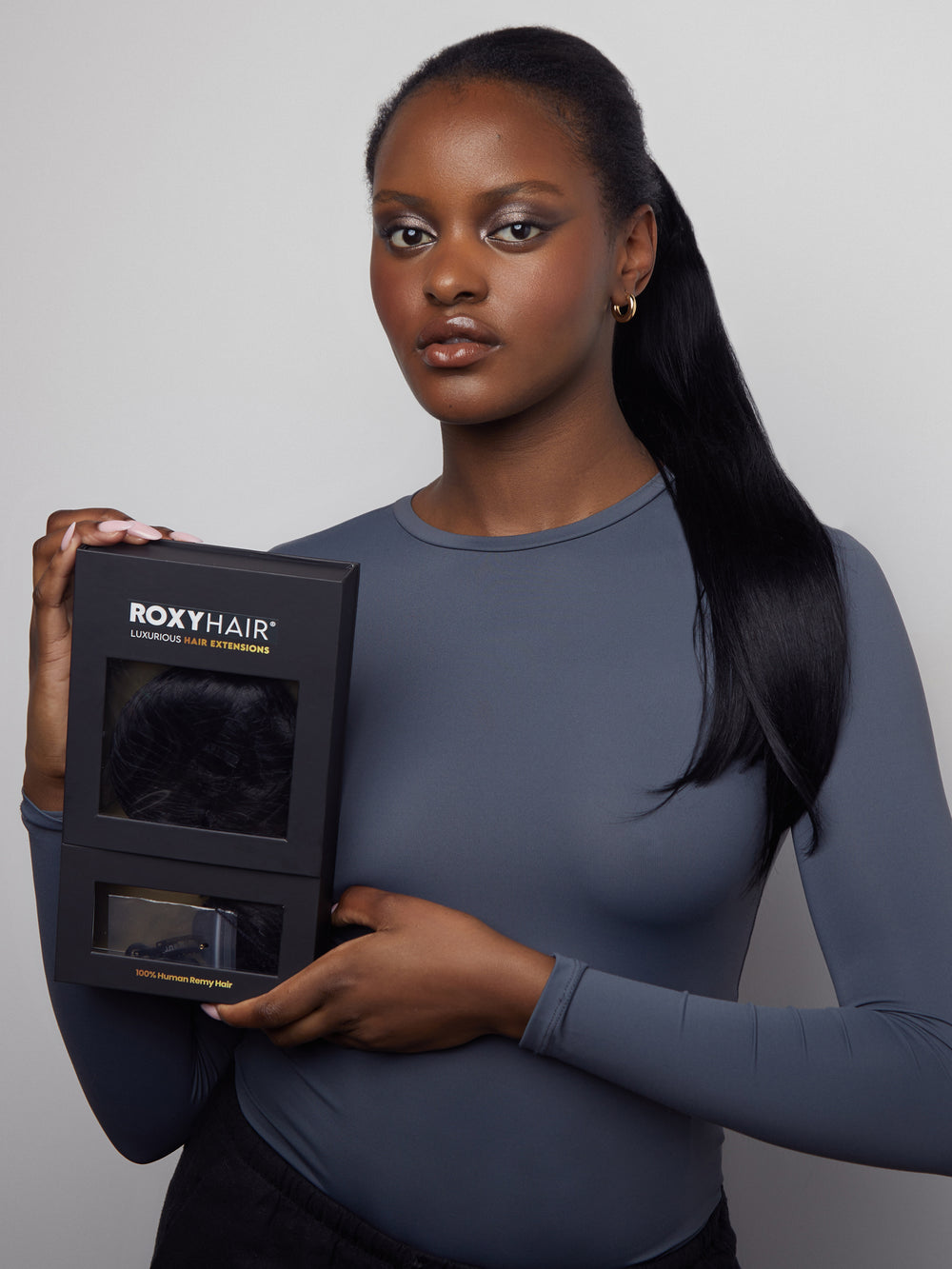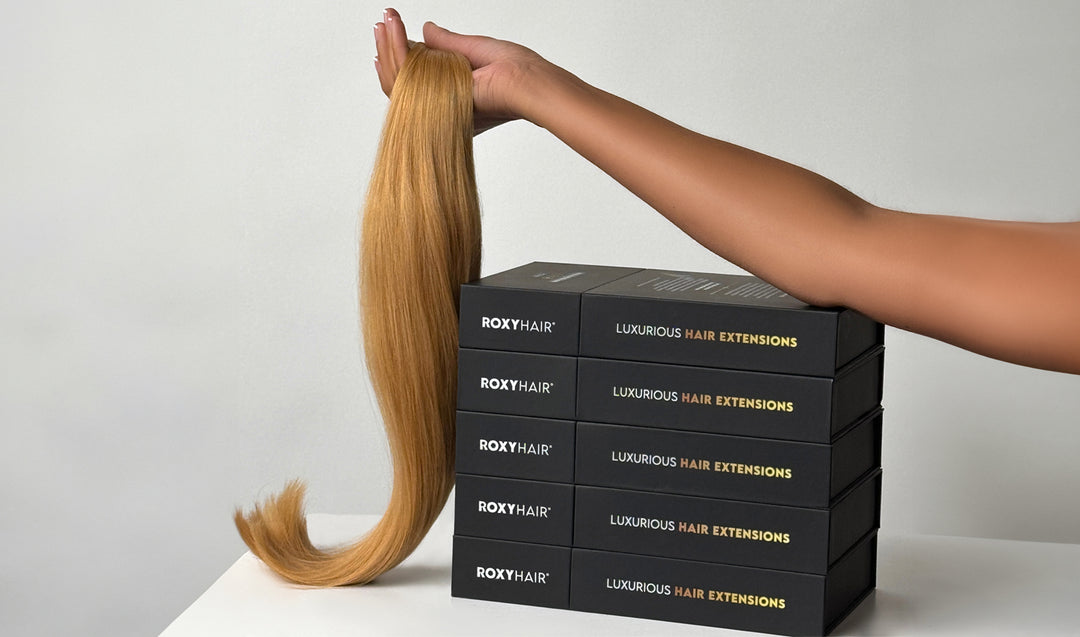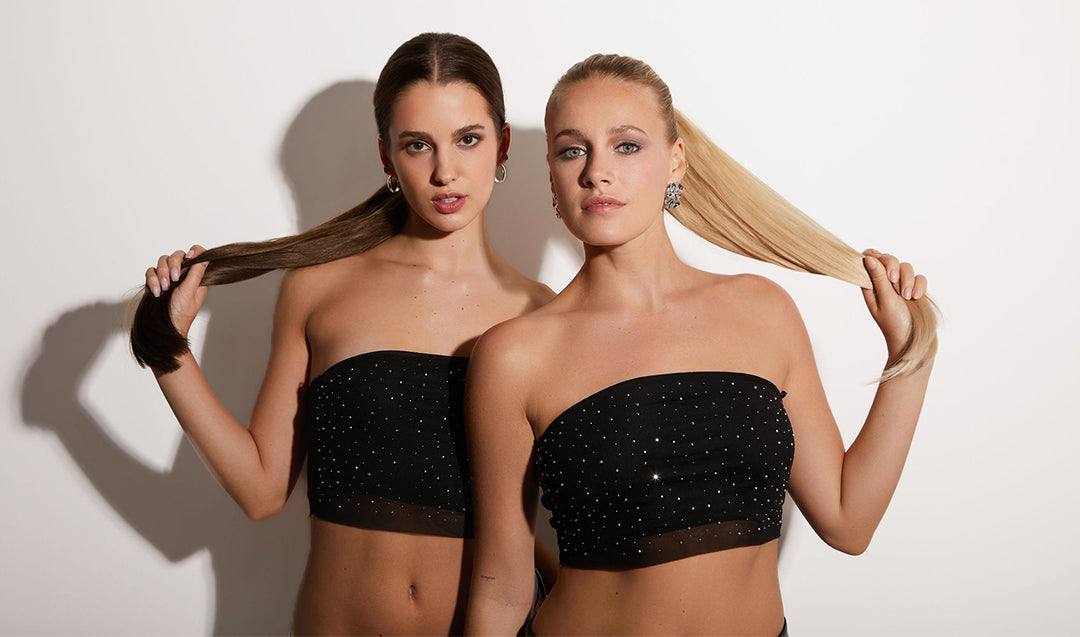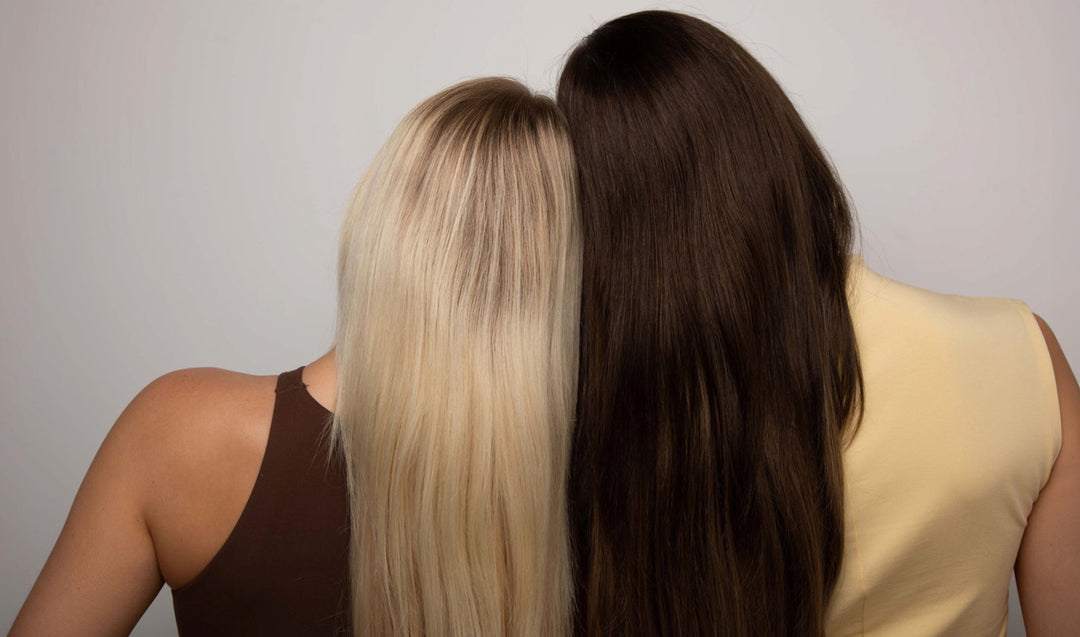We've all had those nights when we can't sleep and start overthinking our looks, right? You're lying awake thinking "Maybe I should just cut my hair and get bangs!" It's something a lot of girls do - wanting a big change to their style.
But then the doubts start creeping in. What if you regret cutting off all that hair you worked so hard to grow? What if bangs just don't look good on your face shape? Before you know it, you're driving yourself crazy debating it until morning.
Here's the solution: front hair extensions! These genius little clip-ins can give you the cute face-framing fringe you want, without any permanent commitment.
Before you run out and buy some online, let us explain the ins and outs. There are different types, different ways to put them in - it's a lot to cover. But don't worry, we'll break it all down simply so you know exactly what you need.
Key Takeaways:
-
Front hair extensions let you instantly change up your look with zero commitment. Get bangs, layers, or more volume just by clipping or taping them in.
-
There are all sorts of front extension styles from easy clip-ins to more permanent looks like micro-beads and sew-ins. The perfect option is out there for your hair needs.
-
Extensions made from human hair can be styled with heat tools and colored just like your natural strands. So many looks are possible!
-
Go for high-quality, real human hair extensions like Remy hair. They blend seamlessly and last way longer than synthetic fiber options.
-
Temporary styles like clip-ins are super low-maintenance. Just clip them in when you want a fresh vibe and remove them easily after!
What are Front Hair Extensions?
Front hair extensions, also called clip-in bangs or face framers. Basically, they're extensions made just for framing your face.
Most of the time, they're made from real human hair so you can style them with heat tools like a flat iron or curling iron. And they come in different lengths, thicknesses, and colors to match your own hair.
The really cool part about front extensions is how simple they are to use. You just clip them in or use some other temporary attachment, and boom - instant new look for your face. No permanent commitments needed. Just an easy way to switch up your style whenever you want.
Types of Extensions
Hair extensions can be quite overwhelming, with all the different options available from clip ins to tape ins, micro beads, halos and wires. If you're new to using extensions navigating through these styles can feel like diving, into a sea of terminology. Although clip in extensions are popularly known there are actually types of hair extensions to explore.
Clip ins
Clip-in extensions are strands of hair wefts attached to a fabric or silicone base with clips. They are extremely user-friendly especially for fine hair- simply open the clips and secure them onto your natural hair wherever you want added volume or length.
The clip-in method is temporary and takes just 5-15 minutes for DIY application at home. No glue, heat, or damaging installation required. You can easily remove the clipped wefts whenever desired.
This fuss-free, non-damaging technique makes clip-ins one of the most popular and versatile extension options. The low commitment allows you to experiment with different styles or enhance your look for special occasions with zero fuss.

Tape ins
Tape-in extensions come pre-taped and are then sandwiched between layers of your natural hair using adhesive tape or glue. This is a good extensions especially if you have a thinning hair. They require professional installation, where a stylist uses a heated tool to melt the adhesive and carefully align the wefts along your roots.
The application process takes around 40 minutes to 1 hour. With proper care, tape-ins can last for several weeks before needing to be re-taped or removed using a solvent.
While long-lasting, the heat and adhesive applied near the roots can potentially cause some damage over time. Visiting a skilled professional is recommended for safe installation and removal.

Micro bead
Micro bead or micro loop extensions - also known as micro links. These get attached using teeny tiny wefts secured by even tinier silicone-lined beads.
The process involves clamping individual beads onto small sections of your natural hair using a special tool. When tightened just right, the bead holds that hair extension weft firmly in place.
While avoiding glue or heat is a plus, micro beads still require serious skill to install properly. If the beads are clamped too tightly, it can cause serious tension and even hair loss over time.
That's why it's crucial to have these bad boys applied by a trained professional extension artist. The installation is meticulous work, often taking 2-4 hours to complete from root to tip.

Sew ins
When it comes to long-lasting extensions, sew-ins are where it's at. But don't let the name fool you - these require some serious skills to install properly.
The process starts by braiding your natural hair into a neat cornrow pattern. Then, using a needle and thread, a stylist meticulously sews wefts of hair directly into those braids.
Sew-ins work best for those with thicker, coarser hair textures. The tight braiding and sewing can put a lot of tension on finer hair, leading to potential breakage.
Shop Roxy Hair
For the right hair type though, sew-in extensions are incredibly long-lasting and natural looking. Some styles even come as full lace wigs sewn into the braids for a seamless, undetectable finish.
Just keep in mind that a professional sew-in is an all-day affair. We're talking several hours in the stylist's chair as they precisely stitch in every weft.
Benefits of Front Hair Extensions
-
Match seamlessly with your natural thin hair texture for a flawless blend.
-
Closures seal off wigs/weaves from the front for an overall natural, realistic design.
-
Lace frontals cover your full hairline from ear-to-ear for the most natural-looking illusion.
-
Offer versatility in styling and parting options to change up your look.
-
Can be fully customized in color, cut, and texture for a personalized, one-of-a-kind piece.
Application Process
If you don't have the time to watch a lengthy videos on how to apply your extensions, here are some easy steps.
Start with freshly washed, product-free hair. You'll want to part your hair horizontally about an inch down from your nape. This lower section is where the extensions will live, while the top layer camouflages the clips. Sneaky, sneaky!
Next, pop all that top hair up and outta the way using a hair tie or clips. You don't want any rogue strands getting in the way of that seamless extension action.
Grab a thin, 1/8 inch section of hair from below the part line. Gently sandwich it between the wefted top and bottom extensions, making sure the adhesive strips can grip through the hair.
Once that first weft is secured, just keep on moving across that bottom section, attaching more extensions as you go. How many you use is up to you and the level of volume/coverage you want. If you've got a sparse hairline, leave out about an inch horizontally so there's enough hair to blend over the wefts.
Treat those strands right by putting them in braids or a buff to avoid tangling while you adjust. Be sure to brush gently each day and shampoo directly on the wefted rows when washing. Conditioning from mid-length to ends only.
Factors to Consider When Choosing Front Hair Extensions
When choosing front hair extensions, consider:
-
Length of wear - Human hair wigs last longer for extended use, while synthetics are cheaper for temporary styles.
-
Quality - Human hair, especially Remy, looks and feels more natural than synthetic fibers.
-
Styling versatility - Human hair can be heat styled, dyed, etc. Synthetics hold one style.
-
Cap construction - Synthetics often have lace fronts. Human hair offers lace, monofilament, silk caps for different looks and breathability.
Conclusion
In conclusion, front hair extensions give you the flexibility to maintain your natural look one day, then switch things up with a major style change like bangs the next. They're also a great solution for camouflaging any postpartum hair loss and boosting volume while your strands recover. Front extensions allow you to experiment with fresh vibes whenever you feel like it in a picture or video, commitment-free.
And when it comes to fuss-free, high-quality clip-ins, no brand does it better than us -Foxy Hair®. Our extensions are made with 100% real remy human hair for a luscious, natural look and feel. Plus, they come in so many shades, lengths, and volumes to perfectly match your hair.
Best of all, Foxy Hair®'s innovative clip-in wefts are designed for seamless, secure application that won't budge until you want them to. You can confidently rock a new style from day to night without any annoying pieces sliding around.
So why not treat yourself to the trendy fringe, face-framing layers, or extra volume you've been craving? Head to your cart now and check out!
Frequently Asked Questions (FAQs)
How long do front hair extensions last?
It really depends on the type! Clip-ins are temporary and can be worn for a day or event. Tape-ins and micro-beads can last 4-8 weeks with proper care before needing reinstallation. And sew-ins can keep going strong for up to 3 months.
Can you style and heat front extensions?
Yes, if they're human hair.
How do I care for front hair extensions?
Be gentle, brush carefully, avoid excessive moisture on adhesive, and follow product care instructions.
Will front extensions cause damage to my hair?
Clip-ins and tape-ins cause little damage when applied properly. Improper sew-in/bead application can lead to breakage.





